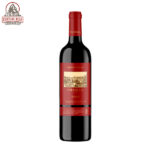Italy
Italy’s twenty wine regions correspond to the twenty administrative regions of the country.
Understanding the differences between these regions is very helpful in understanding the different types of Italian wine.
Wine in Italy tends to reflect the local cuisine. Regional cuisine also influences the wine.
Italian Appellation System
In 1963, the first official Italian system of classification of wines was launched. Since then, several modifications and additions to the legislation have been made, including a major modification in 1992. The last modification, which occurred in 2010, established four basic categories which are consistent with the latest European Union wine regulations (2008–09). The categories, from the bottom to the top level, are:
Vini (Wines – informally called ‘generic wines’): wines can be produced anywhere in the territory of the EU, label includes no indication of geographical origin of the grape varieties used or the vintage. (The label only reports the colour of the wine.)
Vini Varietali (Varietal Wines): generic wines that are made either mostly (at least 85%) from one kind of authorized ‘international’ grape variety (Cabernet Franc, Cabernet Sauvignon, Chardonnay, Merlot, Sauvignon Blanc, Syrah) or entirely from two or more of them, grape variety or varieties and vintage may be indicated on the label. (The prohibition to indicate the geographical origin is instead maintained. These wines can be produced anywhere in the territory of the EU.)
Vini IGP (Wines with Protected Geographical Indication also traditionally implemented in Italy as IGT – Typical Geographical Indication): wines produced in a specific territory within Italy and following a series of specific and precise regulations on authorized varieties, viticultural and vinification practices, organoleptic and chemico-physical characteristics, labeling instructions, etc. Currently (2016) there exist 118 IGPs/IGTs.
Vini DOP (Wines with Protected Designation of Origin): This category includes two sub-categories: Vini DOC (Controlled Designation of Origin) and Vini DOCG (Controlled and Guaranteed Designation of Origin). DOC wines must have been IGP wines for at least 5 years. They generally come from smaller regions within a certain IGP territory that are particularly vocated for their climatic and geological characteristics, quality, and originality of local winemaking traditions. They also must follow stricter production regulations than IGP wines. A DOC wine can be promoted to DOCG if it has been a DOC for at least 10 years. In addition to fulfilling the requisites for DOC wines, DOCG wines must pass stricter analyses prior to commercialization, including a tasting by a specifically appointed committee. DOCG wines must also demonstrate a superior commercial success. Currently (2016) there exist 332 DOCs and 73 DOCGs for a total of 405 DOPs.
The 73 DOCG wines are located in 15 different regions but most of them are concentrated in Piedmont, Lombardia, Veneto and Tuscany. Among these are appellations appreciated and sought after by wine lovers around the world: Barolo, Barbaresco, and Brunello di Montalcino (colloquially known as the “Killer B’s”).
Other notable wines that in the latest years gain much attention in the international markets and among specialists are: Amarone della Valpolicella, Prosecco di Conegliano- Valdobbiadene, Taurasi from Campania, Franciacorta sparkling wines from Lombardy; evergreen wines are Chianti and Soave, while new wines from the Centre and South of Italy are quickly gaining recognition: Verdicchio, Sagrantino, Primitivo, Nero D’Avola among others.
The Friuli-Venezia Giulia is world-famous for the quality of her white wines, like Pinot Grigio. Special sweet wines like Passitos and Moscatos, made in different regions, are also famous since old time.
The 20 Regions
- Aosta Valley
- Piemonte
- Liguria
- Lombardia
- Trentino-Alto
- Adige/Südtirol
- Friuli-Venezia
- Giulia
- Veneto
- Emilia-Romagna
- Toscana
- Marche
- Umbria
- Lazio
- Sardinia
- Abruzzo
- Molise
- Campania
- Basilicata
- Puglia
- Calabria
- Sicily
Showing 1–9 of 75 results














